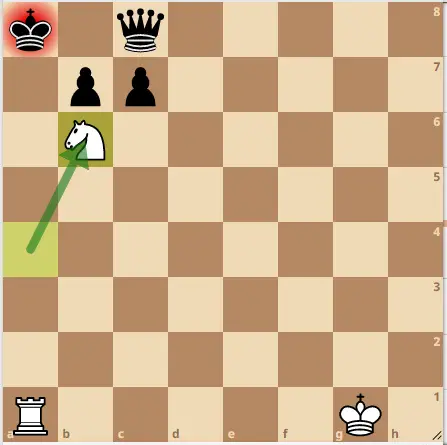One of the most effective tactics in chess is the double attack, in which a piece creates two simultaneous threats against their opponent.
A double attack can be a powerful tool for gaining material advantage and putting your opponent on the defensive.
However, it also requires careful planning and execution to ensure that your pieces are not vulnerable to counterattacks.
In this article, we will explore the concept of a double attack in chess, how it works, and some examples of how to use it to your advantage.
Whether you are a beginner or an experienced player, understanding the double attack can help you improve your chess strategy and increase your chances of success on the board.
What Is A Double Attack In Chess?
In chess, a double attack occurs when a single piece creates two simultaneous threats against their opponent. The purpose of a double attack is to create a tactical advantage by putting pressure on the opponent’s pieces and forcing them to make a difficult choice.
For example, a queen may attack an opponent’s bishop and knight at the same time, forcing the opponent to choose which piece to save or risk losing both. Another example is a knight that attacks both the opponent’s queen and a rook simultaneously, creating a double threat that must be addressed.
Queen double attack knight and king

Double attacks are a common tactic in chess and can be used at any stage of the game, from the opening to the endgame. They are a powerful tool for gaining material or forcing the opponent into a disadvantageous position.
Types Of Double Attack
There are several types of double attacks in chess, but some of the most common ones are:
Fork
A fork is an example of a double attack in which a single piece attacks two or more of the opponent’s pieces simultaneously.
The attacking piece is usually a knight, bishop, or queen. Although, all the pieces on the chess has the ability to perform a fork. The pieces being attacked can be a combination of any of the pieces on the chess board.
Knight fork king and queen

Discovered Attack
A discovered attack is a double attack in which one piece moves out of the way, revealing an attack by another piece behind it. The attacking piece can be a queen, rook, or bishop, and the piece that is revealed to attack can be any piece on the board, including the opponent’s king.
Bishop to e3 attacks the king and reveals a discovery on the black queen

Double Check
A double check is a rare but very powerful type of double attack in which the opponent’s king is attacked simultaneously by two different pieces. The only way to get out of a double check is to move the king, which can often result in a significant loss of material.
By understanding and utilizing these common double attacks, players can gain a significant advantage over their opponents and increase their chances of winning.
The knight and rook double checks the black king

What’s the best piece for double attack?
The best piece for a double attack depends on the specific situation on the chessboard. In general, the queen is the most versatile piece and can be used for a wide range of double attacks.
The queen’s ability to move in any direction and attack multiple pieces at once makes it a powerful weapon in a player’s arsenal.
However, other pieces can also be effective for double attacks in certain situations. For example, the knight’s unique movement pattern can allow it to create forks and double attacks on the opponent’s pieces.
Bishops can also be effective for creating double attacks, especially when combined with pins.
Ultimately, the key to a successful double attack is not the piece used, but the strategic planning and execution of the move.
It’s important to consider the potential counterattacks and ensure that the attacking pieces are well protected after the double attack. With careful planning and execution, any piece can be used to create a devastating double attack.
Fork Vs Double Attack
A fork is a type of double attack in which a single piece attacks two or more of the opponent’s pieces simultaneously.
The key feature of a fork is that it attacks two or more valuable pieces at the same time, forcing the opponent to choose which piece to save and which to sacrifice.
On the other hand, a double attack is a broader term that refers to any move that creates 2 threats. Threats can include attack on pieces or threaten important squares than can lead to checkmate.
Double attack: threatens checkmate and rook on a8 at the same time

Double attacks can include forks, as well as discovery attacks, or even double checks as stated earlier. The main advantage of a double attack is that it creates two threats that the opponent must respond to, which can help to gain material or positional advantage on the board.
In summary, a fork is a specific type of double attack that involves attacking two or more pieces simultaneously with a single piece, while a double attack refers to a tactic in which a piece creates two simultaneous threats against their opponent.
Final Thoughts
In conclusion, a double attack in chess is a tactic where a single move creates 2 threats at the same time. The most common types of double attacks are forks, discovery attacks, and double checks, and each can be used to gain a tactical advantage on the board.
While the queen is the most versatile piece for creating double attacks, other pieces like knights and bishops can also be effective depending on the situation.
However, the success of a double attack depends not just on the piece used, but on careful planning and execution.
By mastering the art of the double attack, chess players can become more strategic in their play and increase their chances of success.


